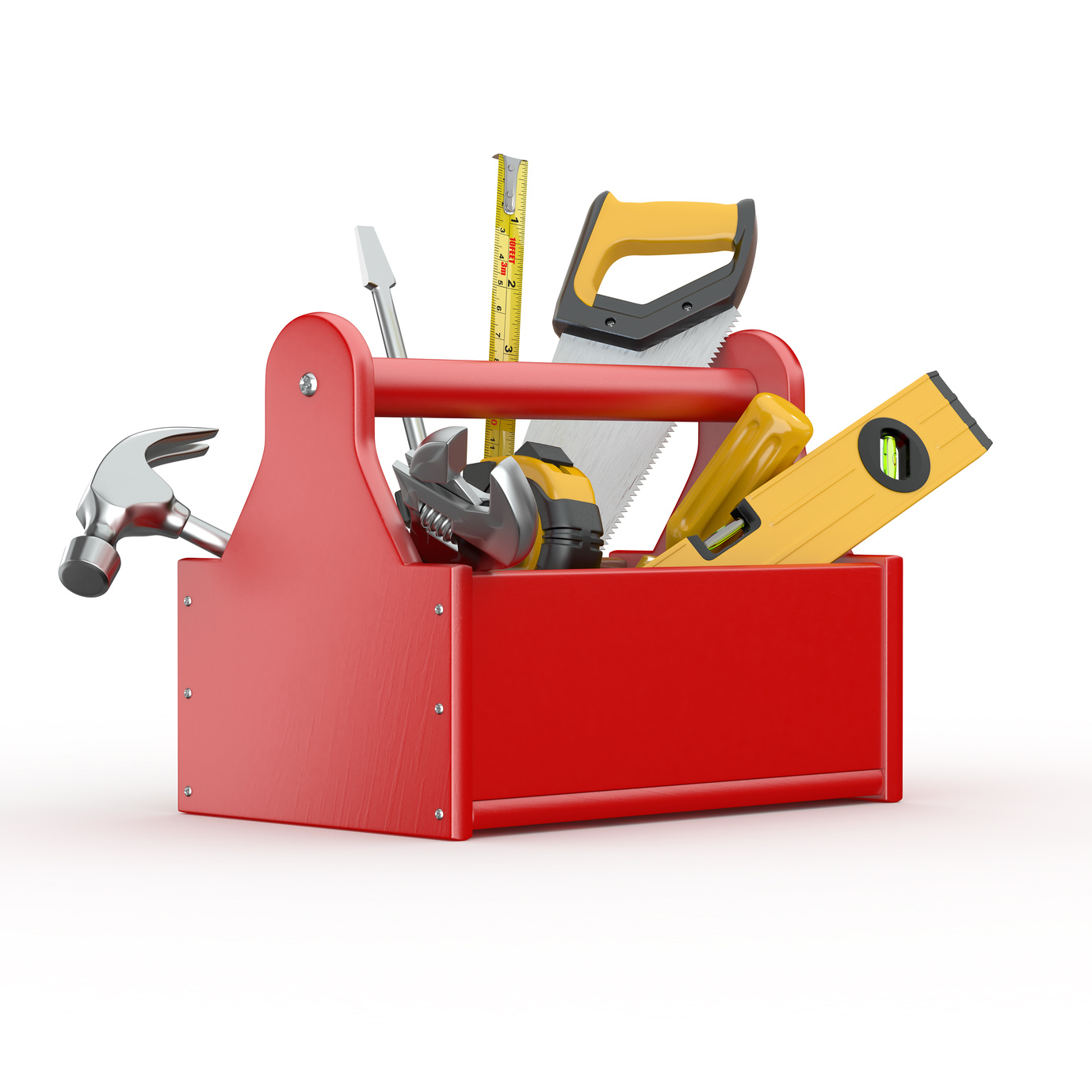The Right Tools for the Job
15 tools every homeowner should have on hand
We’ve all heard this phrase before; “The right tools for the right job!” Well, you certainly don’t need every tool from the hardware store, but there are a few tools that homeowners should definitely have on hand. These essential tools can help you in a pinch and prevent a minor problem from becoming a major defect.
Ask your home inspector during your next inspection about other tools that you might find useful and ask them about the tools that they use.
1. Utility Knife
Utility knives with retractable and replaceable blades can cut through thick materials, including cardboard, rope, foam rubber, heavy tape and more. Now, you don’t have to use your steak knife to open your packages from the post office!

2. Plunger
Clogged sinks or toilets are one of the most inconvenient household problems that you will face. With a plunger on hand, you can usually remedy these plumbing issues relatively quickly.
3. Combination Wrench Set
One end of a combination wrench is open and the other end is a closed loop. Nuts and bolts are manufactured in standard and metric sizes, and because both varieties are widely used, you’ll need both sets of wrenches.
4. Set of Pliers
A standard three-piece set would be best and includes; Needle-nose pliers for small, tight places. Diagonal cutting pliers which have an offset diagonal cutting jaws for flush cutting of thicker materials. Slip-joint pliers feature adjustable jaws for versatility to help grab hold of a nail, a nut, a bolt, and much more.
5. Adjustable Wrench
Adjustable wrenches are somewhat awkward to use and can damage a bolt or nut if they are not handled properly. However, adjustable wrenches are ideal for situations where you need two wrenches of the same size. Screw the jaws all the way closed to avoid damaging the bolt or nut.
6. Caulking Gun
Caulking is the process of sealing up cracks and gaps in various parts of your home. This can provide noise mitigation and thermal insulation, and control water penetration. Caulk should be applied only to areas that are clean and dry. There are several types of caulking & sealant, so make sure to choose the correct material per the application.
7. Flashlight
None of the tools in this list is of any use if you cannot visually inspect the situation. The problem, and solution, are apparent only with a good flashlight.
8. Tape Measure
Measuring house projects requires a tape measure, not a ruler or a yardstick. Tape measures come in many lengths, although 25 feet is most common. Measure everything at least twice to ensure accuracy.
9. Hacksaw
A hacksaw is useful for cutting metal objects, such as pipes, bolts and brackets. Hacksaws look thin and flimsy, but they’ll easily cut through even the hardest of metals. Blades are replaceable, so focus your purchase on a quality hacksaw frame.
10. Level
Only a level can be used to determine if something, such as a shelf, appliance or picture, is correctly oriented. The torpedo-style level is unique because it not only shows when an object is perfectly horizontal or vertical, but it also has a gauge that shows when an object is at a 45-degree angle.
11. Safety Glasses / Goggles
For all tasks involving a hammer or a power tool, you should always wear safety glasses or goggles. They should also be worn while you mix chemicals.
12. Claw Hammer
A good hammer is one of the most important tools you can own. Use it to drive and remove nails, to pry wood loose from the house, and in combination with other tools. They come in a variety of sizes, although a 16-ounce hammer is a good all-purpose choice.
13. Screwdriver Set
It is best to have at least four screwdrivers: a small and large version of both a flathead and a Phillips-head screwdriver.
14. Respirator / Safety Mask
While paints and other coatings are now manufactured to be less toxic (and lead-free) than in previous decades, most still contain dangerous chemicals, which is why you should wear a mask to avoid accidentally inhaling. A mask should also be worn when working in dusty and dirty environments. Disposable masks usually come in packs of 10 and should be thrown away after use. Full and half-face respirators can be used to prevent the inhalation of very fine particles that ordinary facemasks will not stop.
15. Duct Tape
This tape is extremely strong and adaptable. Originally, it was widely used to make temporary repairs to many types of military equipment. Today, it’s one of the key items specified for home emergency kits because it is water-resistant and extremely sticky.
BONUS ITEM: Something to put it all in.
Whether it’s a five-gallon paint bucket, a heavy-duty duffle bag or a toolbox with multiple shelves, store everything in one place, not throughout your house. When you do need to make a quick fix, you want to make sure you can quickly locate “the right tools for the job”!
If you have any questions about the tools that Home Inspectors use, feel free to reach out and ask – Click HERE to Contact Us
